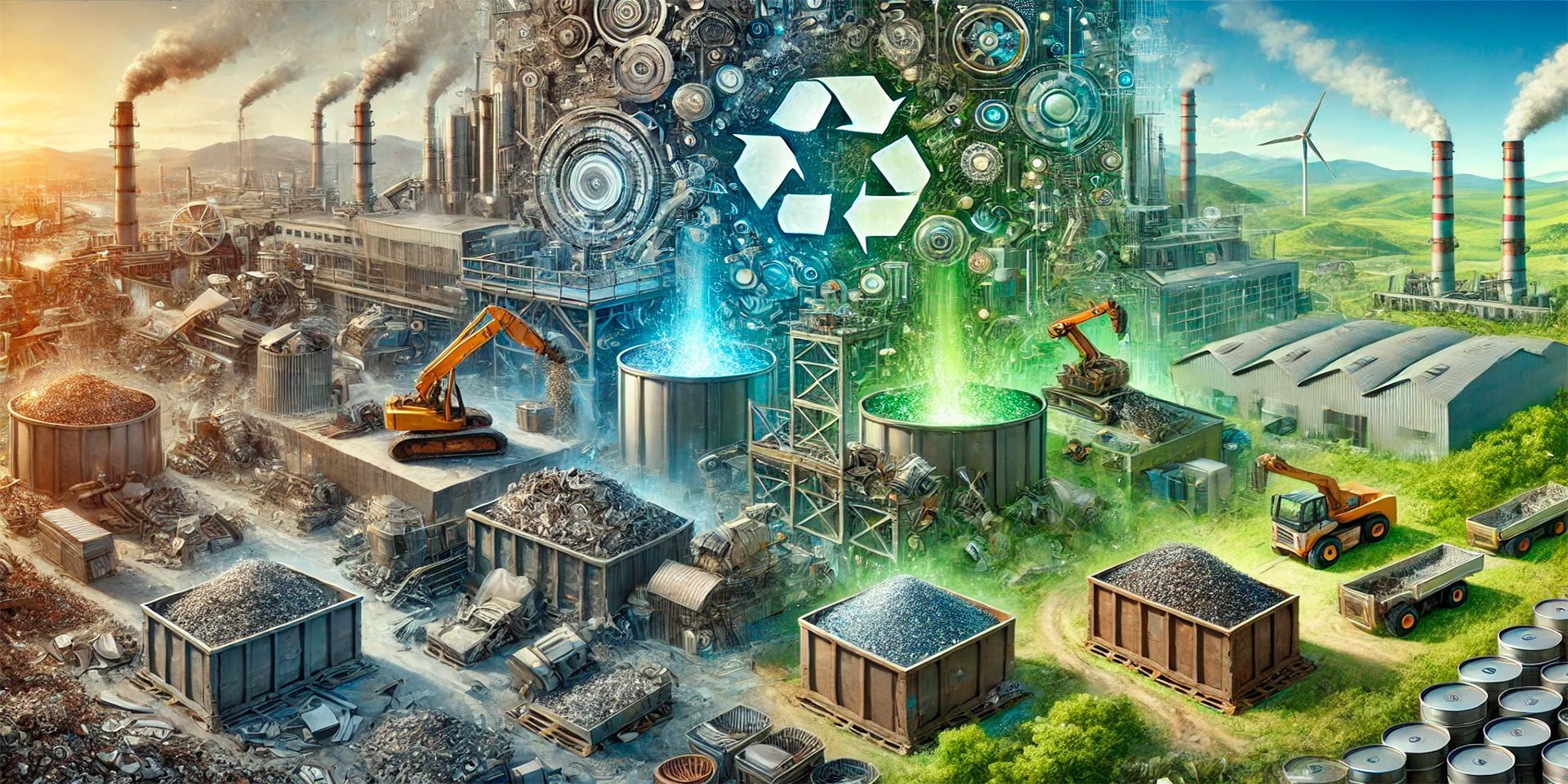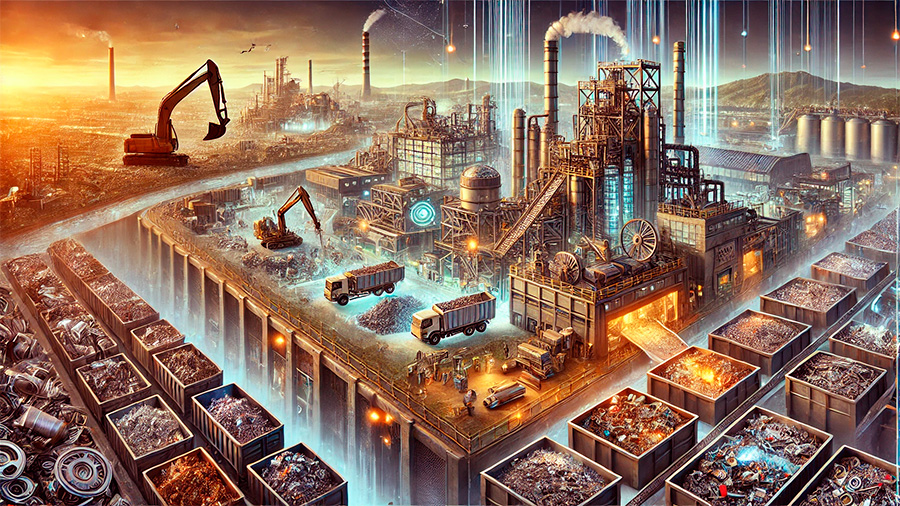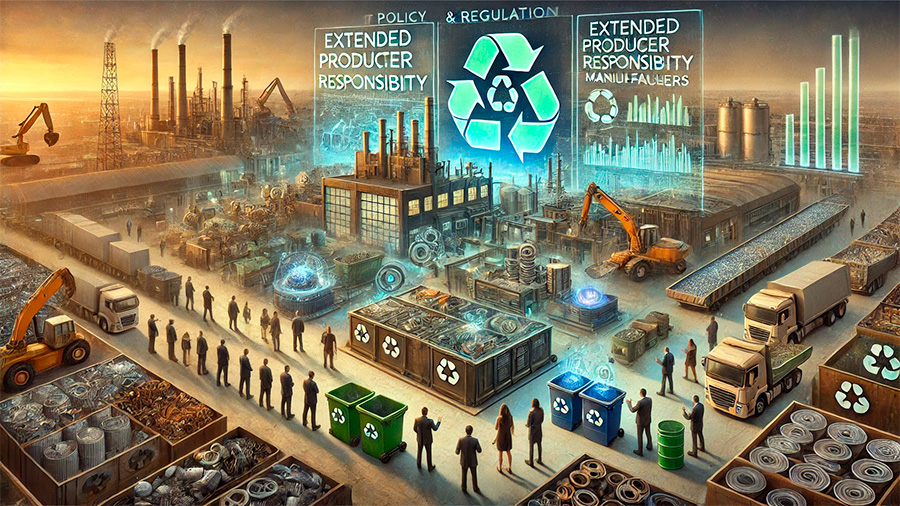
The global demand for metals continues to rise, driven by industries ranging from construction to electronics. However, the increasing production and consumption of metal products have led to growing concerns about metal waste and its environmental impact. Recycling metals offers a potential solution to these concerns, but the process of recovering metals from waste materials presents several challenges. This article explores the recycling challenges associated with metals and how innovative technologies are improving recovery rates, contributing to a more sustainable approach to metal waste.
The Scale of Metal Waste and Recycling Challenges
Metal waste is one of the most prevalent forms of waste generated worldwide, spanning various industries including electronics, automotive, construction, and packaging. Recycling metals offers substantial environmental benefits, but the process is far from simple.
1. The Complexity of Metal Recycling
Recycling metals, while beneficial, involves several complexities. Metals are often mixed with other materials in products, making it challenging to separate and recover them efficiently. In addition, certain metals, especially those used in electronic devices, are present in small quantities and require specialized recovery techniques.
Challenges in metal recycling:
- Material contamination: Metals are often contaminated with other materials such as plastics, coatings, or chemicals, which complicates the recycling process and reduces the purity of the recovered metal.
- Small quantities of valuable metals: Metals like gold, silver, and rare earth elements are often found in very small amounts in electronics, making their recovery difficult and expensive.
- Complex products: Many modern products contain a combination of metals in intricate forms, which can make it harder to disassemble and separate them for recycling.
2. Economic Viability of Metal Recycling
The economic feasibility of metal recycling is another significant challenge. The cost of recycling metal can sometimes exceed the value of the recovered material, making it unprofitable for companies to invest in recycling processes, particularly when virgin materials are cheaper.
Economic challenges:
- High energy costs: Recycling metals often requires significant energy inputs, especially when processing metals like aluminum and steel, which are energy-intensive to melt and purify.
- Low commodity prices: Fluctuating commodity prices can make it difficult for recycling operations to maintain profitability, especially when market prices for recovered metals are low.
- Limited infrastructure: In many regions, there is a lack of adequate infrastructure for collecting and processing metal waste, further limiting the efficiency of recycling efforts.

Innovative Technologies Improving Metal Recovery Rates
To overcome these challenges, significant advancements in technology have been made in recent years. These innovations are not only improving the efficiency of metal recycling but also enabling the recovery of metals that were previously considered too difficult or costly to reclaim.
1. Advanced Separation Techniques
One of the most significant breakthroughs in metal recycling has been the development of advanced separation techniques that make it easier to recover specific metals from waste materials. These techniques use a combination of mechanical, chemical, and thermal methods to separate metals from contaminants and other materials.
Examples of advanced separation techniques:
- Hydrometallurgical processes: This technique uses water-based solutions to selectively extract metals from complex mixtures, improving recovery rates for metals such as copper, zinc, and gold.
- Electrochemical processes: Electrolysis and other electrochemical methods can be used to recover metals from electronic waste, offering high recovery efficiency and purity.
- Magnetic separation: Magnetic separation methods are particularly useful for extracting ferrous metals from non-ferrous materials, streamlining the recycling process in mixed metal waste.
2. Automated Sorting Systems
Automation has revolutionized the recycling industry, making it possible to sort and separate metals more efficiently than ever before. Automated systems that use sensors, AI, and machine learning are improving the precision of sorting processes, leading to higher recovery rates and reducing contamination.
How automation aids in metal recycling:
- Optical sorting: Optical sensors can identify and separate different types of metals based on color, reflectivity, and other characteristics, ensuring that valuable metals like aluminum and copper are recovered more efficiently.
- AI and machine learning: AI-powered systems can analyze vast amounts of data to optimize sorting processes, adapting to changing materials and improving the overall efficiency of recycling plants.
- Robotic systems: Robotics can be used to handle the physical separation of metals from waste, reducing the need for human labor and increasing processing speed.
3. Urban Mining and E-Waste Recycling
Urban mining refers to the process of extracting metals from urban waste, particularly electronic waste (e-waste). E-waste is a rich source of valuable metals like gold, silver, platinum, and palladium. Advanced e-waste recycling technologies are making it easier to extract these metals, even in trace amounts.
Key developments in e-waste recycling:
- Closed-loop recycling: E-waste recycling aims to close the loop by ensuring that metals from electronic devices are continuously reused, minimizing the need for new mining.
- Selective extraction technologies: Innovations such as selective leaching and bioleaching are helping to extract precious metals from electronic devices in an environmentally friendly manner.
- Modular recycling systems: Smaller, modular systems are being developed to process e-waste more efficiently, allowing for the recovery of valuable metals in smaller-scale operations.
4. Waste-to-Metal Technologies
Emerging waste-to-metal technologies, such as pyrolysis and gasification, are opening up new possibilities for metal recovery. These processes convert waste materials into high-value metals by subjecting them to extreme heat or chemical treatments.
Innovative waste-to-metal processes:
- Pyrolysis: Pyrolysis uses high temperatures in the absence of oxygen to break down waste into valuable by-products, including metals, which can then be recovered for reuse.
- Gasification: Gasification is a similar process that converts waste into synthetic gases, which can be used to extract metals or generate energy for further processing.

The Role of Policy and Regulation in Metal Recycling
Governments play a crucial role in supporting and regulating metal recycling industries. Through policies and regulations, governments can encourage investment in recycling technologies, reduce the environmental impact of mining, and ensure that recycling efforts meet sustainability standards.
1. Extended Producer Responsibility (EPR)
Extended Producer Responsibility (EPR) policies hold manufacturers accountable for the entire lifecycle of their products, including their end-of-life disposal and recycling. By implementing EPR, governments encourage companies to design products that are easier to recycle and less harmful to the environment.
Benefits of EPR in metal recycling:
- Encouraging design for recyclability: Manufacturers are incentivized to design products with materials that are easier to separate and recycle, reducing the burden on recycling facilities.
- Increased recycling rates: EPR policies ensure that manufacturers are responsible for the collection and recycling of their products, improving recycling rates across industries.
2. Investment in Recycling Infrastructure
Governments can encourage the development of recycling infrastructure by providing subsidies, grants, or tax incentives to businesses that invest in modern recycling technologies. Expanding recycling capacity and improving facilities are critical for increasing the efficiency of metal recovery.
Government support for infrastructure:
- Financial incentives: Governments can provide financial support to encourage businesses to invest in new recycling technologies, which can help improve recovery rates and reduce waste.
- Public awareness campaigns: Governments can promote awareness of the importance of recycling and encourage consumers to participate in metal waste collection programs.
Conclusion
Metal recycling presents significant challenges, but with advancements in technology and supportive government policies, solutions are emerging to improve recovery rates and reduce the environmental impact of metal waste. By developing and adopting more efficient separation techniques, investing in automated systems, and embracing innovations in e-waste and waste-to-metal technologies, the recycling industry is making strides toward a more sustainable future. As the global demand for metals continues to grow, overcoming the recycling dilemma will be critical to reducing the need for virgin mining, conserving resources, and protecting the environment.
